This article is reproduced from the autocarweekly public account
Author: Wen Feng
It’s time for the year-end review again. How do you feel when you see the words “SAIC” in the title?
In 2021, SAIC Group sold 5.46 million vehicles throughout the year, a “slight decline” of 2.45% compared to the previous year, still affected by the epidemic. If calculated by the sales completion rate, SAIC Group is still 710,000 vehicles short of its goal of 6.17 million in 2021, representing a shortfall of over 11%.

The public opinion on SAIC Group often presents a sharp or supportive trend, such as “the market value is only one-third of BYD’s”, “the king of joint ventures”, or “the pillar of China’s automobile industry”, “rich and powerful”, etc.
It is undeniable that SAIC Group is the first Chinese car company on the Fortune Global 500 list and the champion of Chinese automobile sales for 16 consecutive years, accounting for over one-fourth of China’s passenger car sales. Any one-sided summary of this giant ship is inappropriate.
So today, when we review the overall performance of SAIC Group in 2021, I still want to focus on some objective numbers and explore some deeper reasons behind them.
Sales of joint venture brands dropped by 11.43%
If the lost sales in 2020 can be attributed to the impact of the epidemic, then the sales decline of more than two digits on the basis of 2020 is a warning for SAIC Group’s joint venture car companies.
Last year, the entire industry “fudged” the reason for insufficient sales as “chip shortage”. This is an objective fact, but the two trends behind the words “chip shortage” can better reflect the current market situation of these two car companies.
Firstly, it is the relationship between batch and retail sales, especially for SAIC Volkswagen. Last year, it absorbed more than 231,000 inventories, so from the current news, the decline in retail sales is about 3.2%. The sales volume of SAIC General Motors’ terminal in the last year also controlled the decline at around 6.8% compared with the previous year, and the decline in wholesale sales is not as alarming as that. But compared with the 6.5% sales growth of passenger cars last year, the market share of SAIC’s joint venture brands still declined to a certain extent.
Secondly, for the same reason of “chip shortage”, some car companies can increase prices generously, while these phenomena have hardly occurred in SAIC Volkswagen and SAIC General Motors, two joint ventures.
In mid-2021, a friend who worked in distributor management at SAIC Volkswagen told me quietly that although “cars are hard to find” in the store now, there are no customers who want to jump the queue by “adding money”, and their wish to restore the terminal price system during the chip shortage was frustrated. The feedback from SAIC General Motors’ terminals last year was also similar.This indicates that for SAIC’s joint venture car companies, the user base itself has been locked in, and users do not have a strong expectation of brand premium. Consuming users in the stock market is like fishing in a dried-up pond.
Therefore, the topic that these numbers want to discuss is why the two major joint venture profit pillars of SAIC Group are not so obvious in today’s market environment?
This matter can be discussed from three dimensions.
First, cars are not selling well.
Although last year’s passenger car sales stopped falling for the first time and even recovered to more sales than in 2019, among them, the growth of new energy vehicles has disguised the decline of fuel vehicles. There are huge differences between the two types of vehicles in terms of regional distribution of sales, price range distribution, etc. If the factor of “lack of chips” is removed, it can be found that fuel new cars are not selling well.
Why have fuel vehicles become difficult to sell? If we use the car ownership per thousand people in developed countries to infer the space of the Chinese market, it is no different from “chasing shadows with a sword”. China’s unique degree of urbanization and population density relationship determine that private car travel will be more likely to give way to forms of public transportation.
In 2021, the car ownership per thousand people in China is about 213.8, and according to Ernst & Young’s previous internal estimation, the upper limit of car ownership per thousand people in China is about 290. With the gradual disappearance of population dividends, China’s auto industry has crossed the peak, and if we do not consider the advantages of new energy vehicles in license plate policies, the sales of new cars have actually entered a bottleneck period.
What used to be the “mainstay” of SAIC’s sales may face “competitors” that have never been considered before, such as non-existent car demands of single people, increasingly longer replacement cycles of existing car owners, more cost-effective second-hand vehicles selected from massive inventory, and even crowded parking spaces in residential areas or a newly opened subway.
“Lack of chips” is only temporary, but the overall environment of car consumption is also changing, which should not be overlooked for a car company of SAIC’s size.
Second, joint venture cars are not selling well.
In 2021, the “sandwiching” of independent and luxury brands has made the survival of joint venture car companies worrying.According to the data from China Association of Automobile Manufacturers (CAAM), in 2021, Chinese domestic brand passenger vehicles sold a total of 9.543 million units, a year-on-year increase of 23.1%. Domestic brands accounted for 44.4% of the total passenger vehicle sales, which is a 6% increase compared with 2020. In December, the market share of domestic brands reached as high as 46.9%.
At the same time, in 2021, the sales of high-end brand passenger vehicles in China reached 3.472 million units, a year-on-year increase of 20.7%, accounting for 16.2% of the total sales of passenger vehicles, which is a 1.9% increase compared with 2020. In the end, the cake left for joint venture brands is only about 40%. This is in line with the trend of declining sales at the retail end. In 2022, the retail sales of joint venture brands are also likely to fall below the 40% mark.
Thirdly, and perhaps the most “accurate blow,” is that joint venture vehicles made by SAIC are difficult to sell.
Why are SAIC Volkswagen and SAIC General Motors the most difficult to sell? If the pressure of domestic brand “upward attack” is indiscriminate for joint venture companies, then the “downward attack” targeting European and American luxury brands has precisely hit SAIC Volkswagen and SAIC General Motors. When the price ranges of the two overlap significantly, most consumers find it difficult to give up the temptation of logos.
Currently, SAIC has three “luxury brands” available: SAIC Audi and Cadillac, as well as Buick GL8, a “hidden luxury car” in the MPV market. Although one is a top-tier luxury brand, one is a leader in the secondary luxury market, and one is a “godfather” in the MPV market, they are only “three twos” in the game, far from the level of a “royal flush.”
In the past few years, SAIC has made early preparations for this and hoped that the SAIC Audi project would land earlier, and even rumors of “SAIC Porsche” have been circulating. Efforts have been made, but there is still a gap between our expectations.Excluding the growth of Cadillac by 1.4% and the high growth of the GL8 series by up to 8.4%, in the mainstream joint venture range, both SAIC Volkswagen and SAIC General have experienced a decline of over 10%.
If comparing horizontally, the sales volume of Toyota in the north and south increased by 11% and 8% respectively compared to the same period last year, outperforming the overall market. The relatively weak performance of Japanese and Korean luxury brands has left more room for upward breakthroughs and breathing space for Japanese joint venture car companies. Whether it’s GAC Toyota’s Saina and the new Highlander, or FAW Toyota’s Lingzhi and Crown Land Cruiser, they all have more confidence in setting a high price.

Furthermore, taking FAW-Volkswagen as a “mirror” comparison, in 2021, the sales volume of Volkswagen brand under FAW-Volkswagen also experienced a certain decline. Behind the seemingly surpassing overall sales volume of SAIC Volkswagen, FAW-Volkswagen is also heavily pressured within the mainstream joint venture range.
The slowdown in joint venture is not a problem of SAIC itself, but it is SAIC’s “big trouble.”
New Energy Vehicle Year-on-Year Growth of 128.9%
The purpose of this figure is to investigate whether SAIC’s new energy transformation is smooth enough behind the significant growth.
Let’s divide the transformation of new energy into three “sections”: mini cars, mainstream markets, and high-end products.
Regarding the mini car section, SAIC has achieved excellent results. As early as 2020, when the Hongguang MINIEV was launched, it was unanimously recognized as an absolute hot-selling item within and outside the industry.
As expected, in the first full sales year of 2021, it topped the new energy sales list with a sales volume of 426,000 units. It even locked in the position of the third best-selling passenger car, while the total sales of the GSEV mini pure electric vehicle family exceeded 750,000 units. In addition, products like the Roewe Marvel X sold more than 46,000 units quietly in 2021.
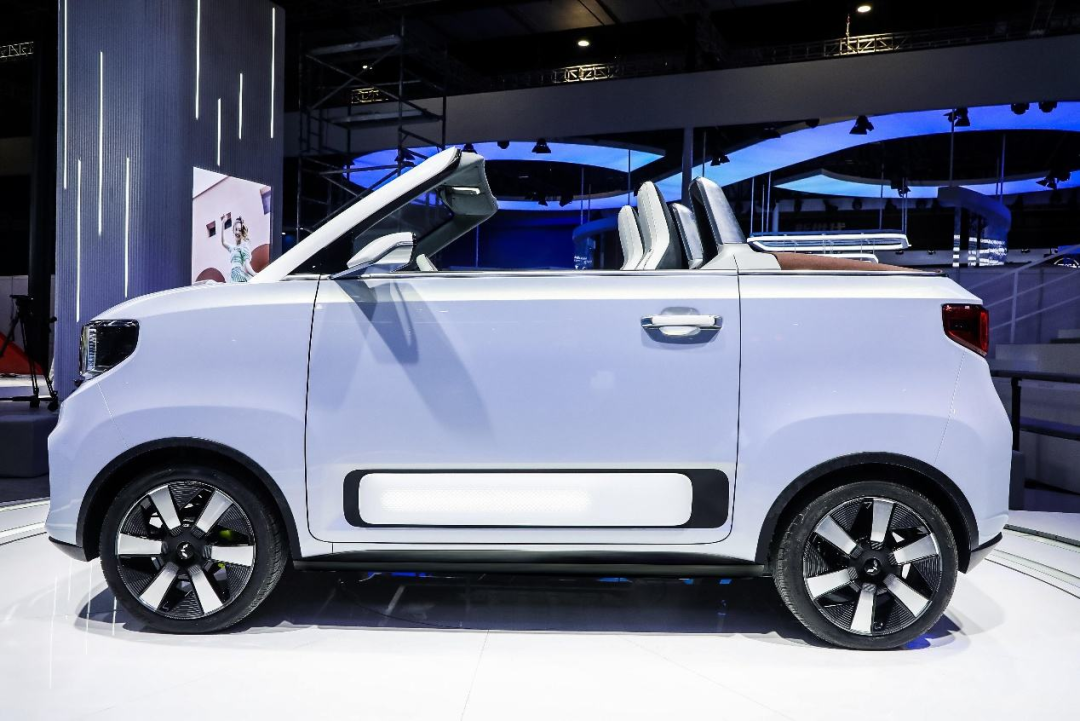
In the pure electric vehicle market, these small-size car models perfectly match the usage demands of users for additional purchases, and the overall market share has exceeded 50%. SAIC Group is the most successful practitioner of this product concept. It can perceive users’ demands and bring products to customers with the most competitive prices through its robust supply chain. If there is only one regret, it may be the insufficient contribution of this type of product to profit.
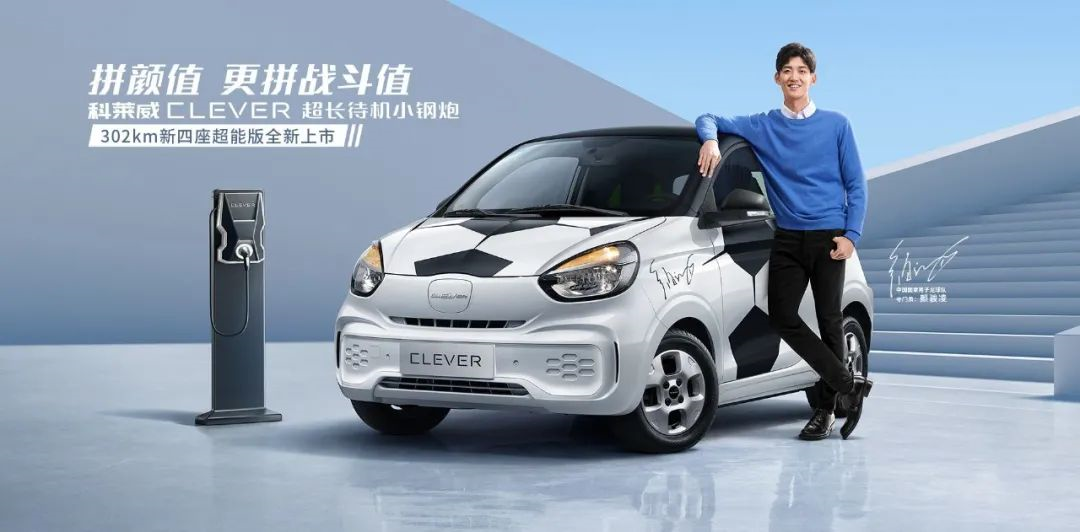 Here is the English Markdown text of the above Chinese text with HTML tags preserved:
Here is the English Markdown text of the above Chinese text with HTML tags preserved:
On the other end of the new energy vehicle dumbbell-shaped sales structure is the high-end market. Although SAIC Group has not yet achieved large-scale delivery in 2021, its demonstrated potential for high-end development is worth looking forward to.
The first model to land on the General Motors Ultium platform, the Cadillac LYRIQ, garnered significant attention at the Guangzhou Auto Show and received pre-orders for over 5000 vehicles in 30 days. Whether in terms of creating a luxurious atmosphere or the technical value of its pure electric platform, the Cadillac LYRIQ has the potential to target BBA’s pure electric products and achieve an “overtaking on a curved road” within the luxury brand sector.

As for self-owned brands, the IM L7, which debuted at the 2021 Shanghai Auto Show as SAIC Group’s “Number One Project,” also had an outstanding performance—gaining 3000 angel round orders, selling out within an average of about 2 minutes each day. Despite encountering some challenges in communication, the market’s feedback on the IM L7 is still relatively positive.

However, due to chip shortages and other reasons, potential users may experience long waiting periods before delivery, resulting in some anxious feelings. In response, IM has made certain adjustments to its business operations, maintaining its delivery promise to install trial vehicles by the end of 2021 while also promptly adjusting interior design, quality assurance, and service policies to efficiently respond to user demands and win the approval of most car owners who made pre-orders.
Aside from the “operational” aspects of communication, the IM L7 and IM brand both have many noteworthy features.
Firstly, the IM L7 demonstrates excellent design ability and draws on SAIC Group’s long-term experience in independent styling. Its product emphasizes certain aspects while sacrificing others, especially in terms of chassis performance and intelligent driving capabilities, and has precise positioning.

At the brand level, IM brings a highly innovative “Rock” strategy that, for the first time, “certifies” the value of user data, rejecting the “negative-effect competition” of “leeching off data” while rapidly iterating on products using customer data. The “Rock” also empowers hardware upgrades and provides early customers with greater practical benefits, effectively solving the typical problem of electric vehicle product value depreciation, killing two birds with one stone.# 2021, R Automobiles renamed to “RisingAuto” and became independent from SAIC Motor, effectively filling the product line gap between Changan and Roewe in the 200,000-300,000 CNY price range. Prior to this, R Automobiles only had two relatively old models, ER6 and Marvel R, which to some degree hindered its sales performance. With the unveiling of RisingAuto R7 and other projects, RisingAuto will overcome the most difficult “green handover” period and compete with more mainstream competitors using more “new forces” sales models.
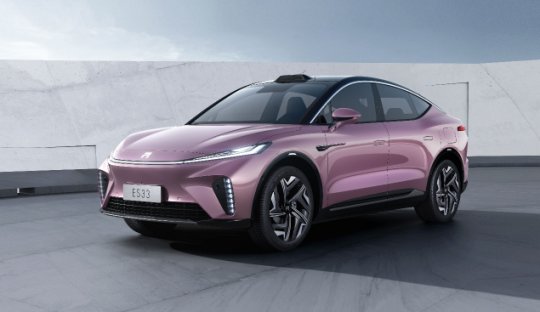
Undoubtedly, the internal competition between Changan and RisingAuto creates pressure, but internal competition means that both companies have to produce products and services that are more customer-oriented to compete with external competitors. At the same time, competition in the supply chain and new energy services end helps to form better economies of scale, ultimately enhancing SAIC Group’s overall competitiveness in the high-end new energy market.
Behind the exploration of high-end, SAIC Group has already established a solid technological foundation.
While some customers still have faith in “full-stack self-research,” SAIC Group has already invested leading companies such as United Electronics, Horizon, STARC Technology, Momenta, and Zero-Photonics in a series of fields, including basic electronic architecture, vehicle networking, and autonomous driving hardware and software. SAIC Group has even invested in upstream enterprise high-precision map supplier CHMT.

As an established state-owned enterprise, SAIC Group has injected a lot of competitive new blood. Some of these companies have already become high-quality suppliers of domestically produced hardware and software and have established partnerships with companies outside the SAIC system.
Therefore, when SAIC became embroiled in controversies about whether or not it should entrust its soul to Huawei, the critics actually ignored SAIC’s “strategic depth”. SAIC Group has invested more than 60 billion yuan in innovation fields, surpassing its own Know-How accumulation for the vehicle business. This seemingly controversial statement is not a blind “arrogance”.
SAIC Group’s new energy vehicles have high scores and potential, but their performance in mainstream markets has not met our expectations yet.Currently, the Volkswagen ID family uses the total sales of Volkswagen North and South as its main statistics and dissemination criterion. In fact, the feedback on the ID. series from the outside world is not bad, but users still consider specific factors when placing orders in reality, so the presentation of sales is not outstanding. The sales of SAIC passenger cars’ new energy vehicles, except for the Kawei, still mainly focus on the B-end large customer market. SAIC-GM Buick and Chevrolet brand new energy vehicles also do not have a large market presence.
It can be said that in the mainstream price range of 100-200,000 yuan for new energy vehicles, SAIC Group’s actual C-end user sales still have a long uphill climb.
Although the overall penetration rate of new energy vehicles in the mainstream price range is low, the performance of SAIC Group is not lukewarm. But the noticeable trend in 2021 is represented by BYD and other car companies, which are exploring their mainstream price range new energy vehicle market share. With the help of the DM-i technology, BYD has revived the plug-in hybrid market and led a group of independent brands such as Geely, Great Wall, GAC, and Chery to join in.
This may also be the most potentially “continuously explosive” subdivision market in the entire new energy market in 2022. However, whether it is a joint venture or an independent brand within the SAIC Group, if they want to launch a product with both market presence and technological potential, they still need to invest a certain amount of effort.
The sales of independent brands accounted for 52.3% in 2021, reaching 2.857 million units. This is the first time SAIC’s independent brand sales have exceeded 50%.
It is worth mentioning that the overall volume of SAIC passenger cars + SAIC Maxus has also reached 1.033 million units. In other words, SAIC has two “million-unit” level independent brands in its pocket, Wuling + Baojun and Passenger Cars + Maxus.
The growth in sales mainly comes from the outbreak of overseas markets.
In 2021, SAIC passenger cars achieved 697,000 new car sales overseas, a year-on-year increase of 78.9%, ranking first among domestic car companies for six consecutive years. Among them, SAIC passenger cars’ total exports for the year reached 290,000 units, a year-on-year increase of 68%; SAIC-GM Wuling’s overseas sales for the year reached 146,000 units, a year-on-year increase of 88%. At the same time, SAIC’s overseas production and sales also reached a scale of nearly 100,000 units.At present, SAIC Motor Corporation Limited has expanded its business to more than 70 countries and regions worldwide, and has created a phenomenon in the segmented markets of some regions and some vehicle models. Especially the MG brand, which sold 360,000 units overseas in 2021. Even domestic marginal models such as MG EZS have a certain presence in the developed countries market like Europe.
Behind SAIC’s achievements in going abroad is a miniature of China’s competitive automotive industry system, providing foreign users with equally competitive price, functional configuration, and even more intelligent experience. While SAIC itself has adopted a more localized brand strategy that is more suitable for foreign markets, further accelerating the penetration pace of Chinese auto companies in overseas markets.
However, despite its remarkable sales performance overseas, SAIC Motor Corporation Limited seems to be struggling in the domestic market.
Apart from new energy products, SAIC Motor Corporation Limited’s main self-owned brand vehicle models are concentrated in a series of low-priced models such as Roewe i5, MG ZS, and Wuling Xingchen. Whereas, in the past year, some brands like Lynk & Co and BYD have begun to emphasize that their average selling price has exceeded 150,000 yuan, proving the “real value” of their sales growth. This suggests that SAIC Motor Corporation Limited’s own brand still needs to speed up its pace of development and growth.
Other self-owned brand models’ upward momentum stems from “finding the longboard”, such as:
-
BYD, representing the “energy longboard”, has achieved its goal of upward development by switching between energy and driving modes, and has caught the joint venture auto brands off guard.
-
Great Wall, representing the “positioning longboard”, has created a series of “straight male happy cars” such as the Tank 500, Cyber Tank, and Great Wall Cannon to harvest the neglected (or traditionally believed by conventional auto companies to be having lesser market capacity) blue ocean users.
-
Geely, representing the “endorsement longboard”, sells users a chassis and powertrain that are the same as that of Volvo XC90 at 300,000 yuan and instantly transforms the weak comparison with joint venture brands into a strong “strategic attack”.
However, SAIC’s own brand seems to lack a significant “longboard effect” in the domestic market in 2021.The only representative works of positioning long-board and endorsement long-board in the automotive industry are those in the Roewe iMAX8, with a sales volume of 16,000 units in 2021, achieving certain success. Behind it, the endorsement of the MPV model strength within the SAIC system and insight into home user scenarios are all reasons that attract the attention of replacement and upgrading users.

However, the market capacity of MPV is still limited, and in this round of replacement and upgrading, there are still more market growth opportunities.
Meanwhile, in terms of energy and driving form switching, SAIC’s independent brand is also one of the few mainstream Chinese automakers that have not released their own full hybrid technology brand (if the “3.0T green surging power” in essence is not counted).
As mentioned before, the BYD DM-i has reactivated the plug-in hybrid market. In the next stage, hybrid models will become the best alternative to traditional fuel vehicles in the mainstream market, and the technological boundary between full hybrids and plug-in hybrids will become further blurred. Independent brand automakers have begun to master the full hybrid technology that has the same level of electricity consumption and fuel consumption as Japanese hybrid systems, and have extended corresponding plug-in hybrid models based on this. The essence behind this is to hand over to users the choice of whether or not a larger battery and external charging function are needed.

SAIC Roewe had previously applied for a low-profile full hybrid model called “Dragon Cat” built on the RX3 platform, which has similar size data to the current Roewe RX3 and is a small SUV, but no high-profile publicity has been seen on any technical details, and there has been no further announcement on the pace of its launch.

In a sense, the domestic market is a more “volatile” existence compared to the overseas market, but under the trend of replacement and upgrading, what is “volatile” now is not the price itself, but the thinking of technological strength and product positioning. SAIC’s independent brand needs to usher in a large-scale update and iteration.
What will SAIC focus on in 2022?
After talking so much, where are the opportunities for SAIC Group in 2022?
First of all, can the sales volume in overseas markets break through 1 million? Although the uncertainty of the COVID-19 pandemic still exists, the basic situation of SAIC’s overseas growth is still good. The threshold of 1 million may mean that SAIC’s products have formed channel advantages and brand awareness in some regional markets, which will also be a milestone event for China’s automobile industry to gradually “say goodbye to the internal circular economy.”It is worth noting that Marvel R has already been adorned with MG’s logo and entered the European market. The Zhi Ji L7 has also gained some attention on the overseas internet. In 2022, SAIC Group may have the opportunity to enter higher-end overseas markets.
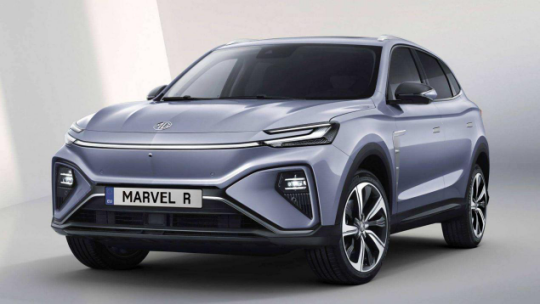
Secondly, can SAIC’s high-end transformation achieve better results and bring more profits to the company? The speed of product import and channel expansion may be the key success factors. We look forward to seeing more oil-powered products imported by SAIC Audi to meet mainstream market demand, to hearing more about products such as Audi Q4 e-tron, Cadillac LYRIQ, Zhi Ji L7&LS7, Fei Fan R7, and to witnessing the landing of more sales channels of these high-end product lines, allowing users to have a closer contact with these high-end products.

Thirdly, can SAIC Group effectively reverse the situation in the mainstream oil-powered car market? For joint venture car companies, it is necessary to input more insights into market changes for their partners in order to create relatively differentiated products. The SAIC Volkswagen Ling Du L, which was unveiled at the beginning of the year, is a benchmark case with reference significance.
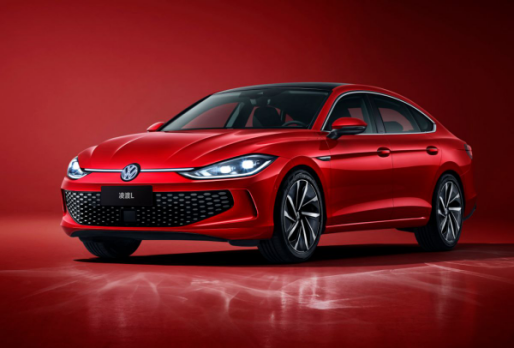
For independent car companies, it is urgent to find and open up new blue ocean markets, and to persuade users with truly competitive self-developed technologies or supplier endorsements. The Rong Wei RX 5 MAX, which is representative in this regard, is expected to receive more attention since it is equipped with a love letter 8AT gearbox in the mid-term facelift model than in the previous state.
Conclusion
SAIC is so large that it cannot be easily explained in a few sentences, and it reflects the direction of the entire industry. From SAIC, every practitioner in the auto industry can see the pain, confusion, and struggle that the entire industry is facing in the period of transition from old to new driving forces.
Still, I am full of optimism about SAIC’s performance in 2022. Looking at the company’s layout and transformation, it is an exciting process of seeing the accumulation and precipitation of China’s auto industry, actively embracing change, honing internal strength, and gradually standing on a larger stage.
Fortunately, we are all witnesses to this process.
This article is a translation by ChatGPT of a Chinese report from 42HOW. If you have any questions about it, please email bd@42how.com.
